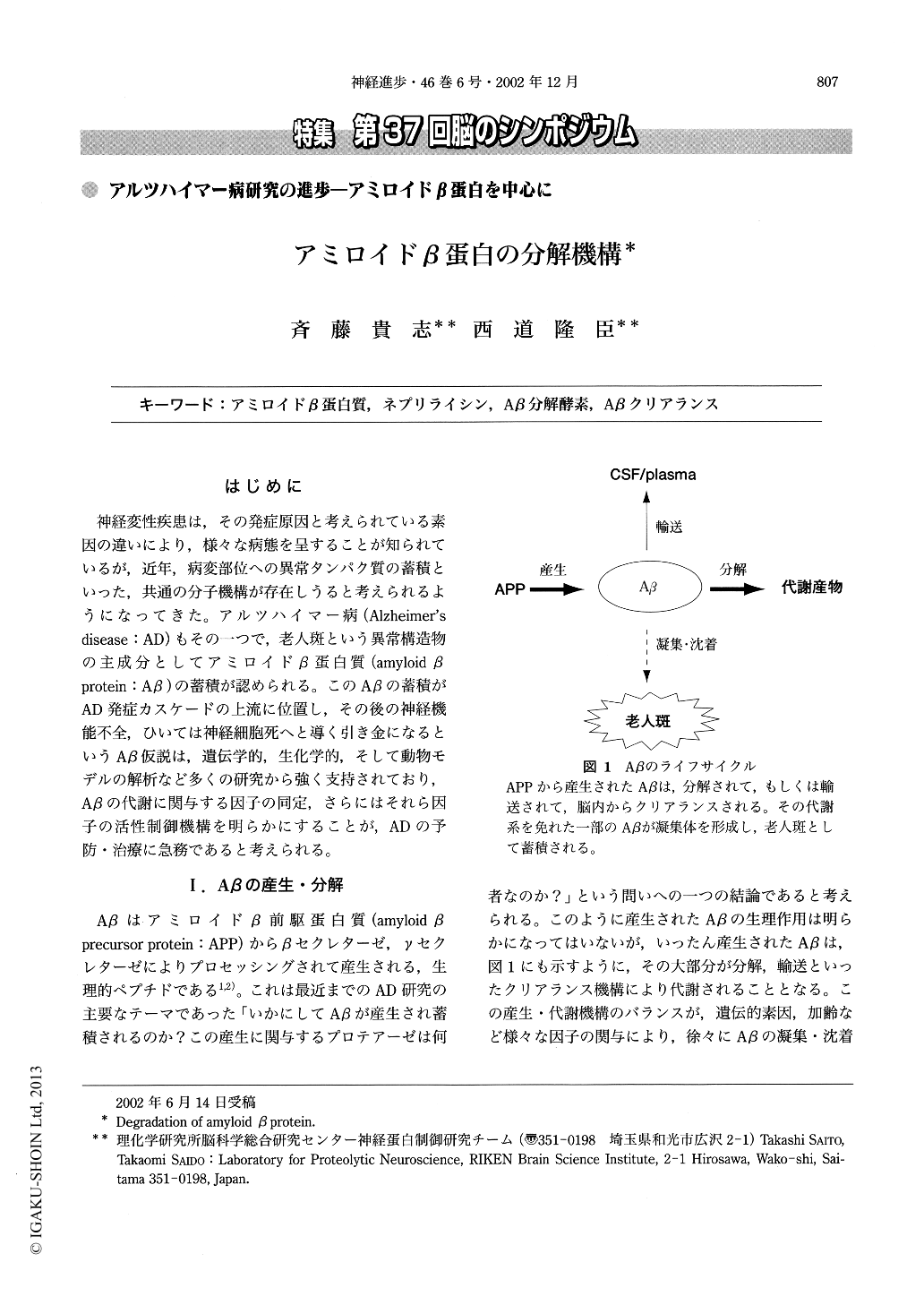Japanese
English
- 有料閲覧
- Abstract 文献概要
- 1ページ目 Look Inside
はじめに
神経変性疾患は,その発症原因と考えられている素因の違いにより,様々な病態を呈することが知られているが,近年,病変部位への異常タンパク質の蓄積といった,共通の分子機構が存在しうると考えられるようになってきた。アルツハイマー病(Alzheimer's disease:AD)もその一つで,老人斑という異常構造物の主成分としてアミロイドβ蛋白質(amyloidβprotein:Aβ)の蓄積が認められる。このAβの蓄積がAD発症カスケードの上流に位置し,その後の神経機能不全,ひいては神経細胞死へと導く引き金になるというAβ仮説は,遺伝学的,生化学的,そして動物モデルの解析など多くの研究から強く支持されており,Aβの代謝に関与する因子の同定,さらにはそれら因子の活性制御機構を明らかにすることが,ADの予防・治療に急務であると考えられる。
Deposition of amyloid β protein (Aβ) initiates the pathological cascade leading to Alzheimer's disease (AD). In rare familial AD cases, the deposition is known to be caused by increased Aβ production, but most of the other cases may rather be caused by decreased clearance, which also would lead to the increase in the steady-state Aβ levels in the brain. We previously reported that neprilysin, a neutral endopeptidase family member, is a major Aβ-degrading enzyme in vivo.

Copyright © 2002, Igaku-Shoin Ltd. All rights reserved.


